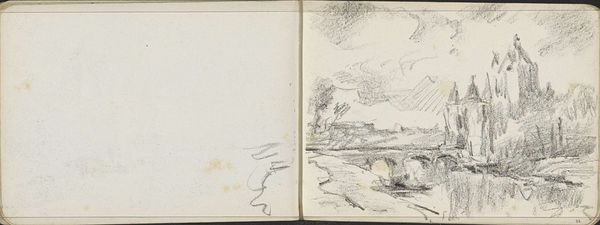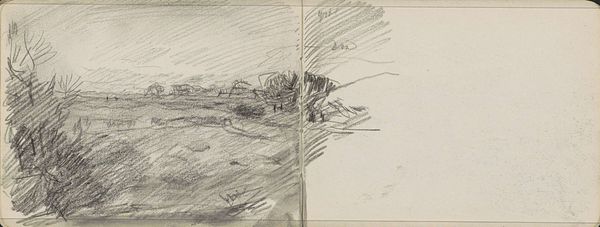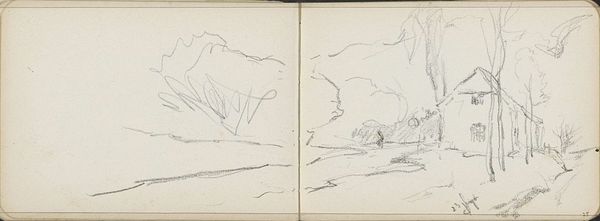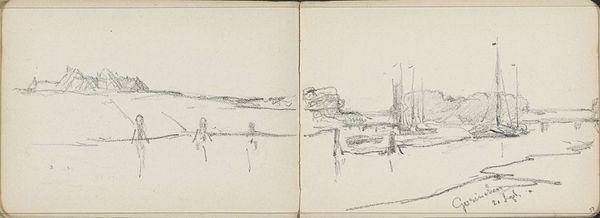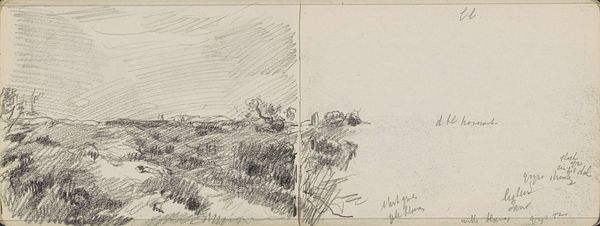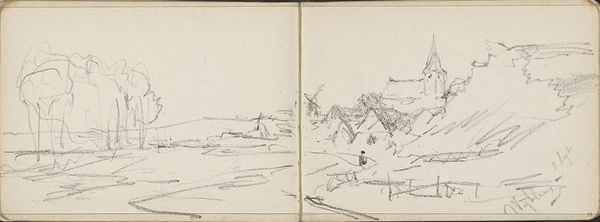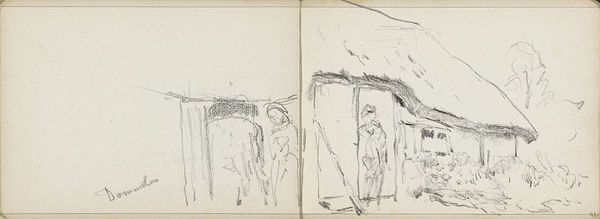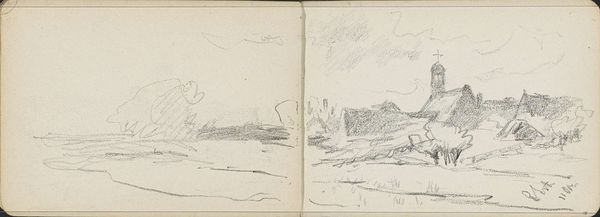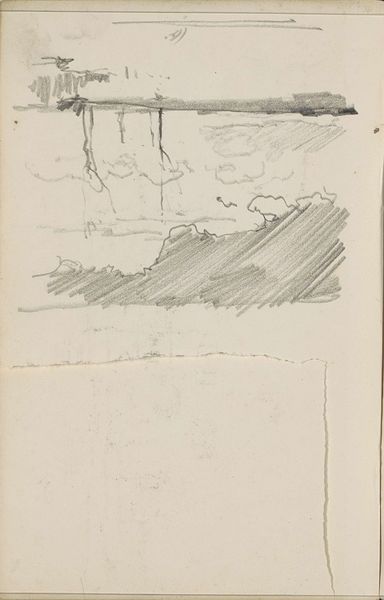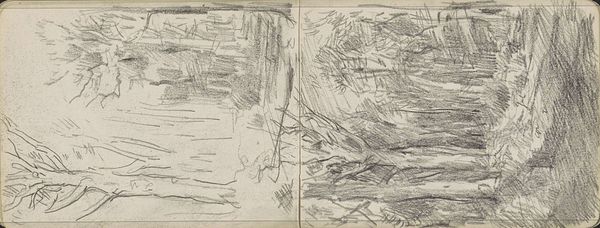
Dimensions: height 114 mm, width 159 mm
Copyright: Rijks Museum: Open Domain
Curator: This is Willem Cornelis Rip’s "Amsterdamse Poort te Haarlem," created in 1907. It appears to be a drawing, possibly in pen and pencil, capturing a cityscape view. Editor: Immediately, I am drawn to the textural quality of this sketchbook piece, with its rapid strokes and shading evoking a somber atmosphere. Curator: Absolutely. As a document of its time, the "Amsterdamse Poort te Haarlem" can be analyzed within the contexts of urban development and early 20th-century society. What can a city gate communicate, considering boundaries, mobility, and civic identity? This artwork might represent a moment of reflection on the changing landscape of Dutch cities. Editor: The gate is clearly the dominant form. Throughout art history, gates often symbolize transitions and access points. The style is reminiscent of Impressionism; even with just minimal sketching, this piece creates a psychological sense of depth through those repetitive marks. It beckons with a symbolic promise, as it is poised at the end of what is visible. Curator: Consider how Rip’s choice of subject and medium contributes to the narrative. His approach prompts a dialogue with architectural symbolism. Was he perhaps critiquing the growing urbanization and industrialization and their impacts on marginalized populations? It's worth thinking about art in public spaces and its intersectional role with identity, and even displacement. Editor: And, in a more intimate read, it’s also important to keep in mind the sketchbook origins. The spontaneity adds to the reading. The repeated scribbles and layering imply an almost emotional attachment or interest with that specific monument; perhaps a feeling of passing into Haarlem’s history as you pass under the gate. I wonder what meanings the Gate would have held for the inhabitants? Curator: A compelling reflection on continuity and change in the history of the city of Haarlem, but perhaps with modern undertones. Editor: Indeed. "Amsterdamse Poort te Haarlem" resonates because of that evocative duality. It bridges a place between urban evolution, symbolic boundaries, and historical awareness.
Comments
No comments
Be the first to comment and join the conversation on the ultimate creative platform.

